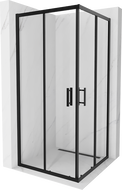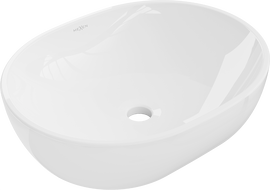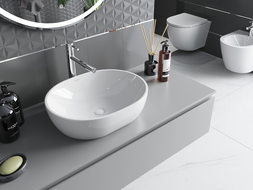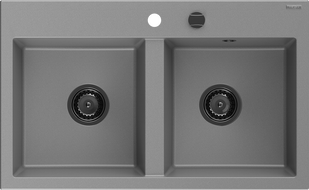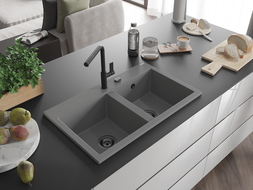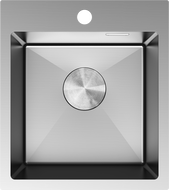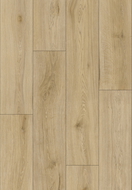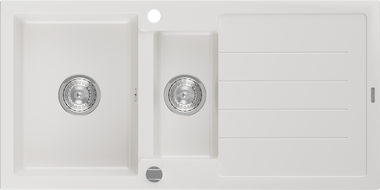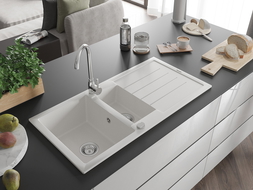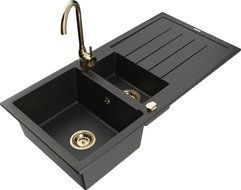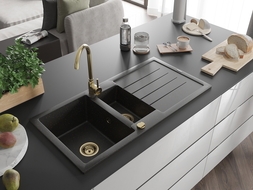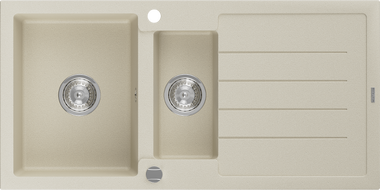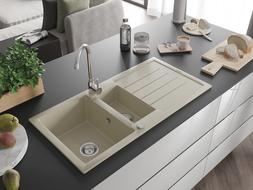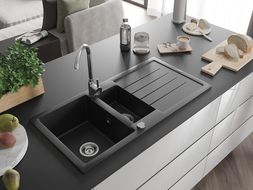
If a drainer reminds you only of an unappealing plastic stand for wet dishes, it's time to change that opinion! Modern dish drainers offer quite a variety of options to choose from. We have models that hang above the sink, sit on the counter, and are also mounted on the sink. They can be made of stainless steel or durable plastic in many color options. Find out why dish drainers are a good solution.
Sink Drainers
One possible solution for places where drainers are installed is the sink. They are preferred even by people who use a dishwasher daily because it's a very convenient place to put freshly washed pans or pots, especially if you know you'll need them again shortly. A sink drainer can be a container made of plastic or stainless steel, placed directly on the edge of the sink, above one of its basins. The round holes on the bottom of the drainer allow water to drain directly into the sink's drain.
The second solution could be drainers designed for the sink, integrated into the countertop surface or the cabinet next to it. This is usually a flat, grooved tray that allows for safe placement of plates, cups, and other dishes. Such a drainer is worth considering when you don't have space to place it on the sink. Moreover, it's a quite practical drainer, taking up little space, which is especially important in small kitchens.
Countertop Dish Drainers
An equally common solution, as drainers mounted above the sink, are dish drainers placed on the kitchen countertop surface. They are most often made of plastic and are used for thin cups, glasses, and other dishes or cutlery that are not suitable for the dishwasher. It's also an ideal place to store your favorite mug, which you use multiple times each day. This is the simplest and very practical version of a drainer.
A countertop drainer is convenient for cups and plates that require hand washing, but you must pay attention to ensure that the drops of water dripping from them do not damage the furniture on which they are placed. Therefore, a dish drainer equipped with some type of tray, where the water flows in, is ideal for such situations. Sometimes it may be supplemented with guides to easily slide it out to dispose of the water.
Or Maybe Hanging Dish Drainers?
In small kitchens with a small sink and limited counter space, hanging a drainer on the wall just above the sink is an excellent idea. The height at which the drainer will be positioned depends largely on the type of tap installed in the kitchen. A common solution is to place the drainer inside specially designed hanging cabinets in this location. Such kitchen equipment saves counter space while maintaining ergonomics during washing. This way, cups, plates, and other dishes are easily accessible but still hidden in the cupboard, ensuring perfect order in the kitchen.
A cupboard is not the only way to mount a hanging drainer; it can also be directly attached to the wall. This solution was popular for many years before dishwashers became widespread in our homes. A wall-mounted drainer allows easy drying of dishes, eliminating the need to spend time wiping them. It's a product that is easy to keep clean, and the kitchen gains additional storage space for glasses and other frequently used dishes that you don't want to wash in the dishwasher for some reason.
Do you already think that each kitchen requires a different drainer? Well, that's true, and it directly results from the room's layout and each of our needs. A dish drainer simply has to be matched to how the kitchen is organized and how it is used and cooked in daily life. So, consider your daily kitchen practices, and then choose a dish drainer that will meet your everyday needs!


